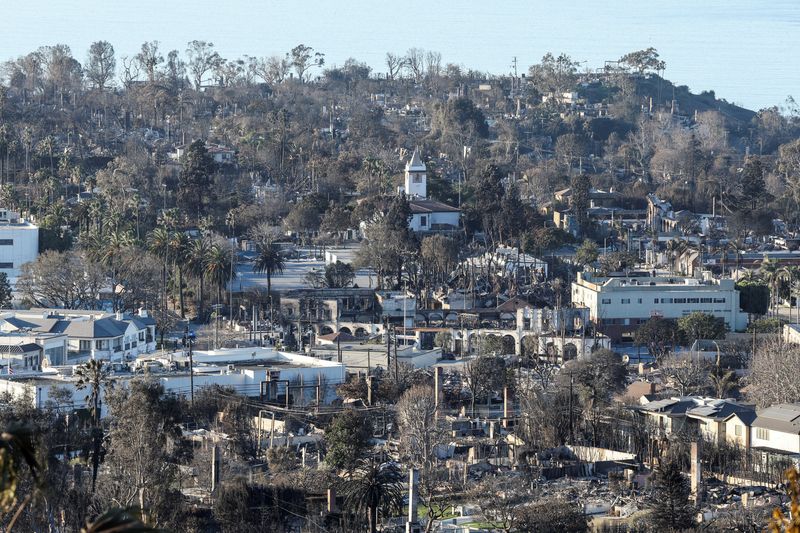(Reuters) -Southern California Edison, a unit of utility firm Edison International (NYSE:EIX), on Monday was sued on claims that its electrical equipment started one of the major wildfires raging in the Los Angeles area, according to court filings.
At least 24 people have died in the fires that began last Tuesday, and more than 150,000 residents have been forced to flee their homes. More than two dozen people are reported missing, authorities said.
The lawsuit, filed in a Los Angeles Superior Court, is on behalf of a group of homeowners, renters, business owners and others with properties destroyed by the Eaton (NYSE:ETN) Fire in the Pasadena area.
The Eaton Fire in the foothills east of Los Angeles has scorched roughly 14,117 acres (57 sq km) or 22 square miles, nearly the size of Manhattan. That fire is the second most destructive inferno in California history, according to the suit.
The suit claims multiple eyewitnesses observed a fire at the base of a transmission tower owned by Southern California Edison (SCE). Some of those witnesses posted videos of the incident on their social media accounts.
Edison International’s shares were down nearly 12% to $57.24 on Monday. They have declined by about 27% since the fires broke out last week.
The unit, Southern California Edison (SCE), did not immediately respond to a Reuters request for comment.
The subsidiary, on Jan. 9 and 10, filed safety incident reports on the Eaton and Hurst fires respectively.
SCE said it has received notices from insurance companies to preserve evidence related to the Eaton Fire, adding the fire could allegedly be attributable to its utility facilities, which prompted it to release its Jan. 9 report.
It also added that no fire agency had suggested its electric facilities were involved in the ignition of the fires.
However, a day later in the Hurst report, the company noted they found a downed conductor in the area but did not know if the damage occurred before or after the start of the fire.

